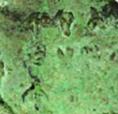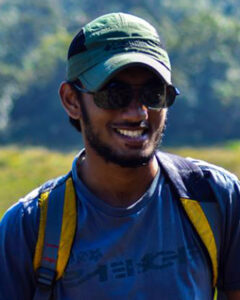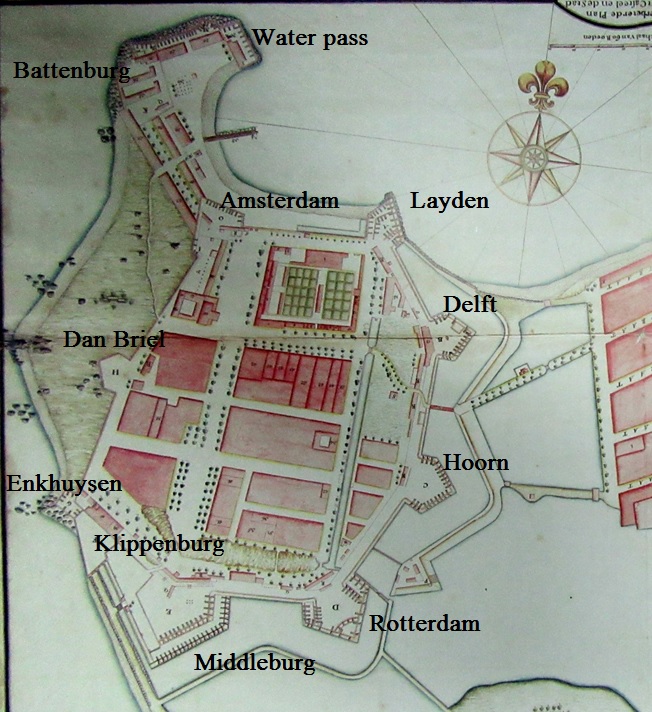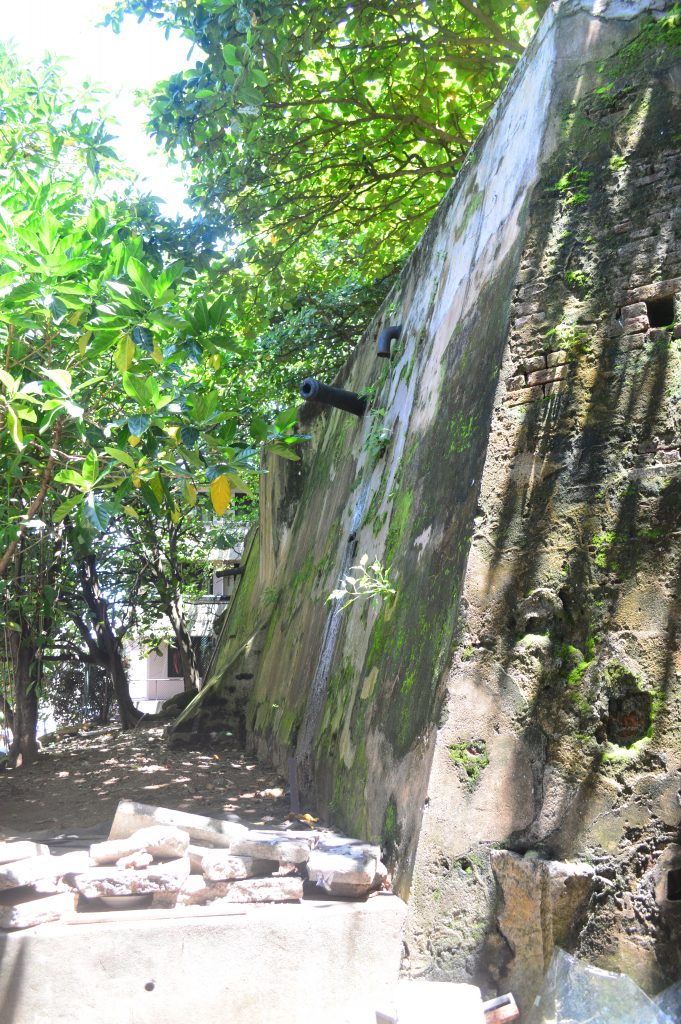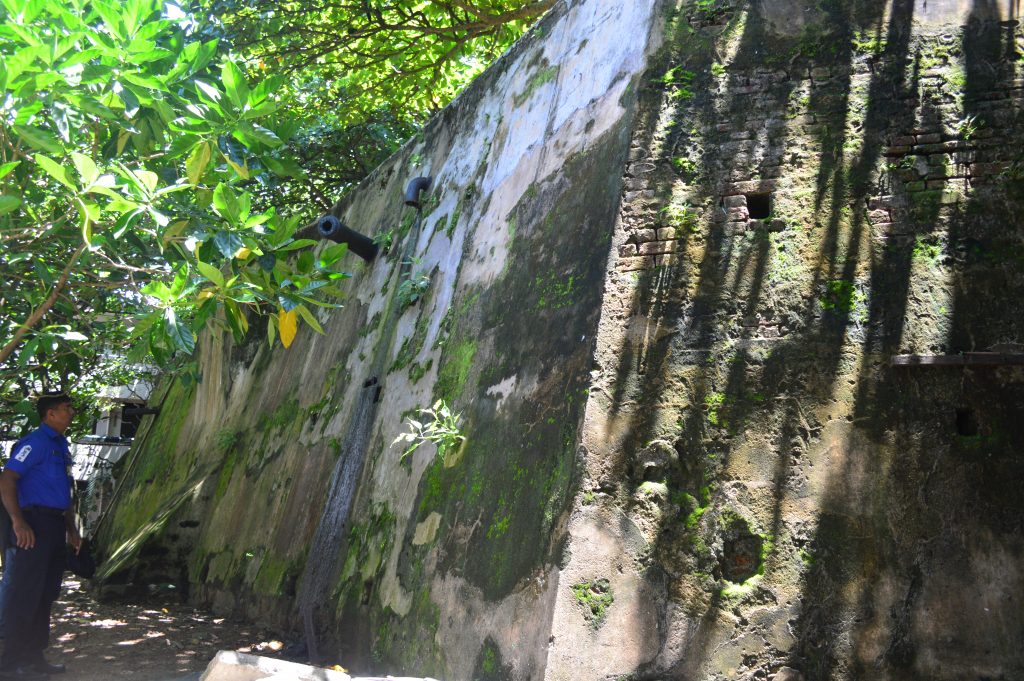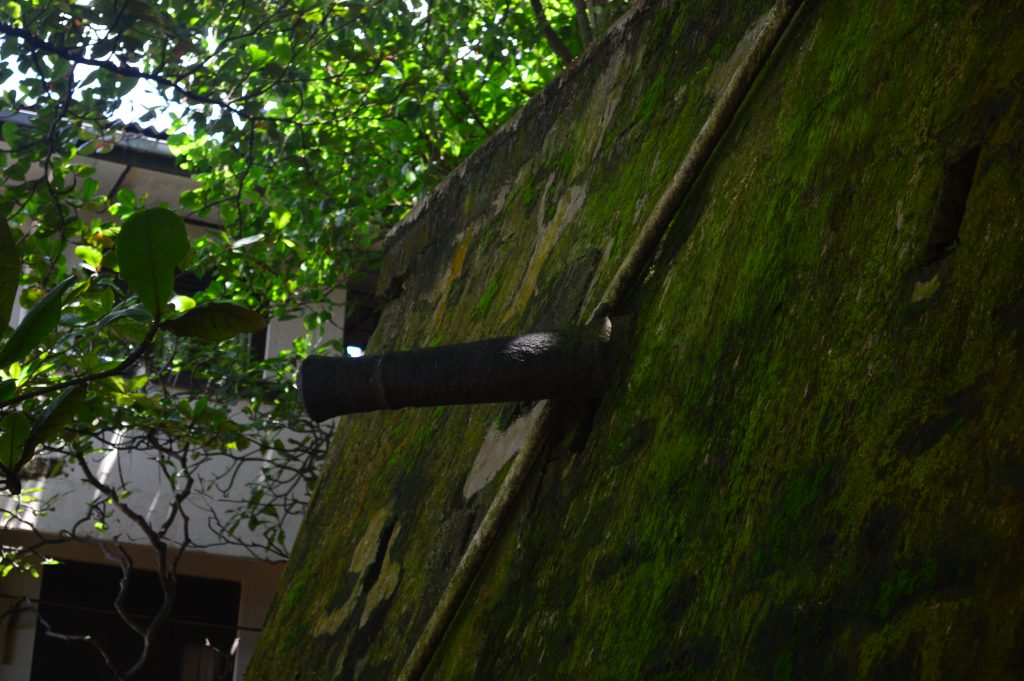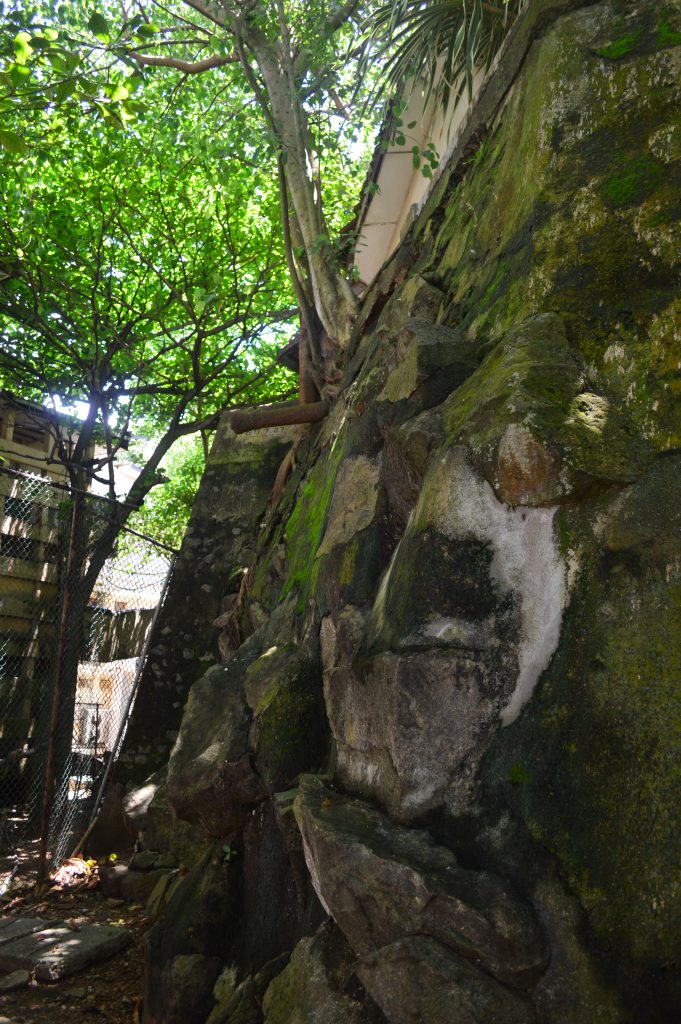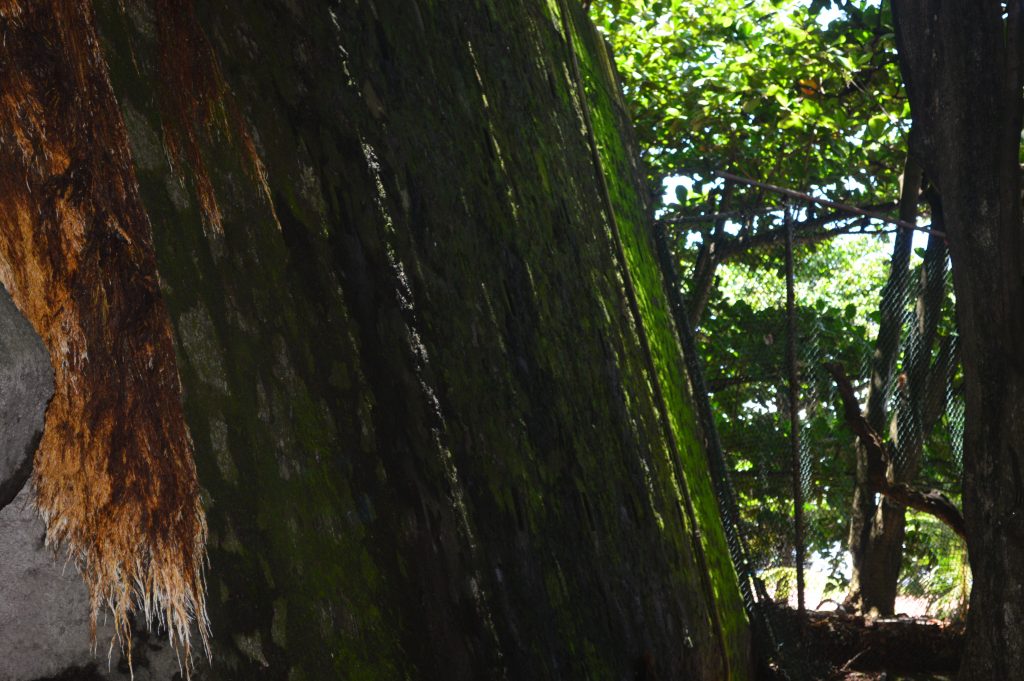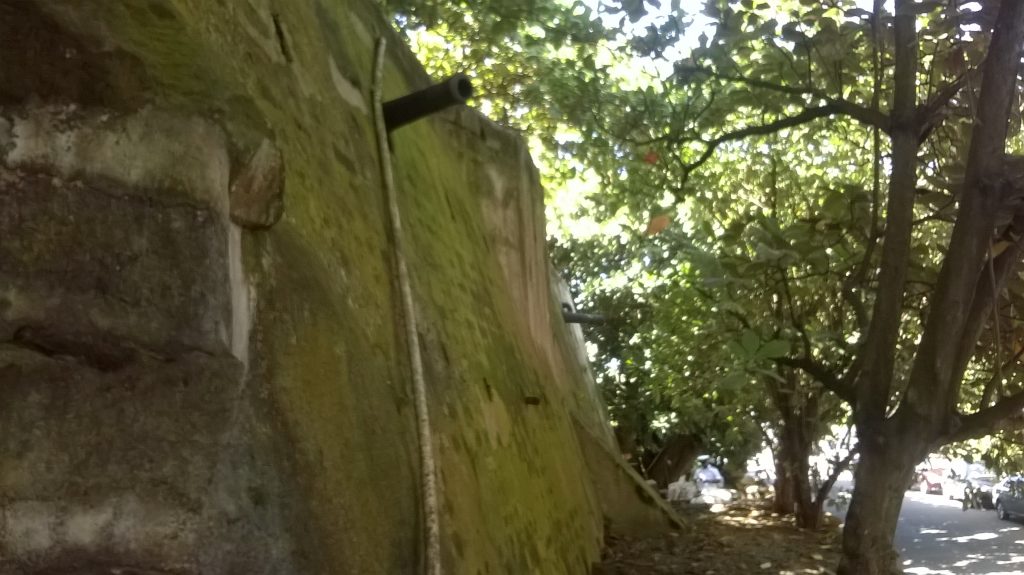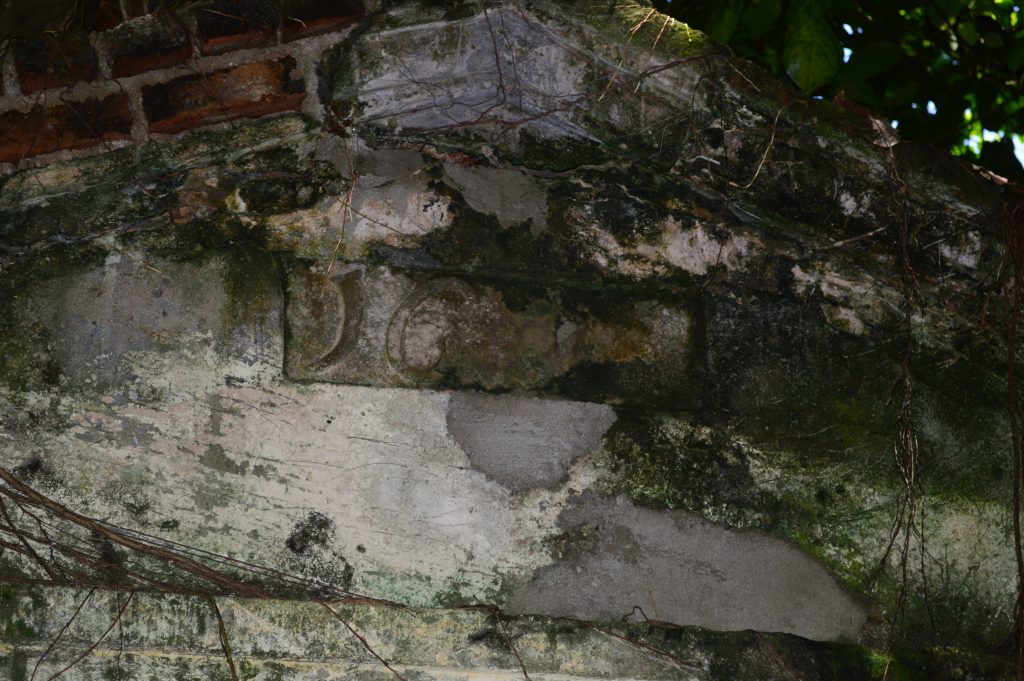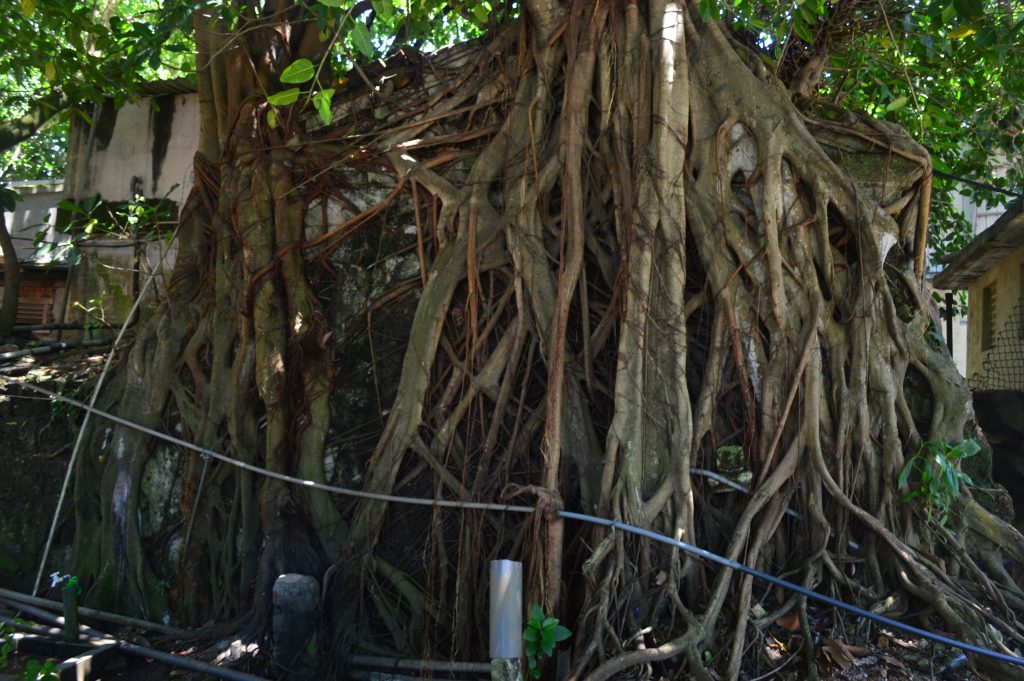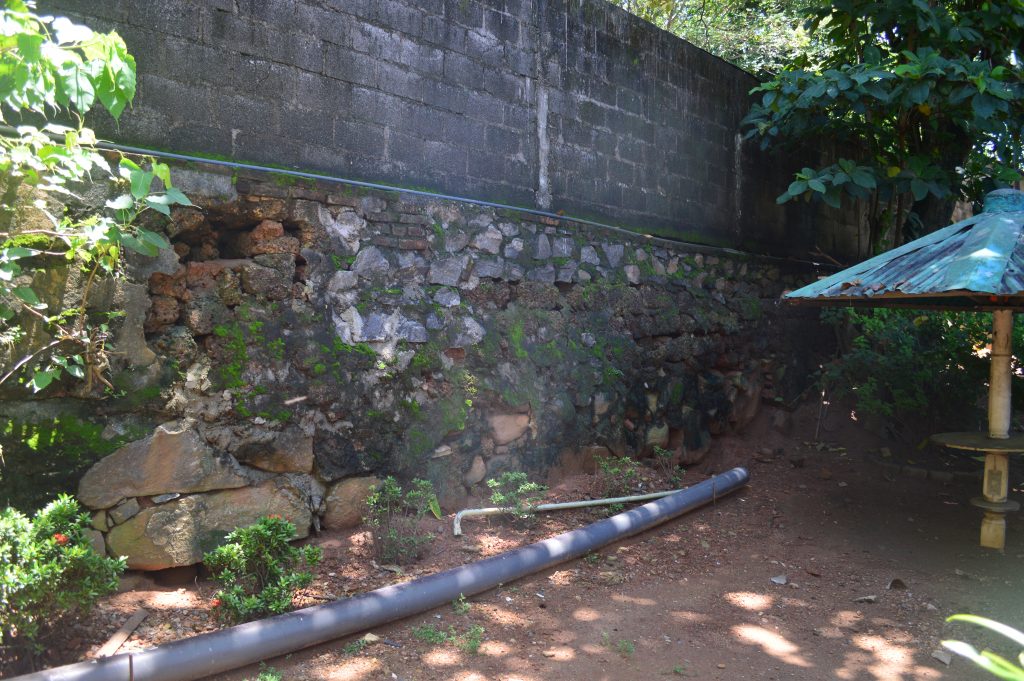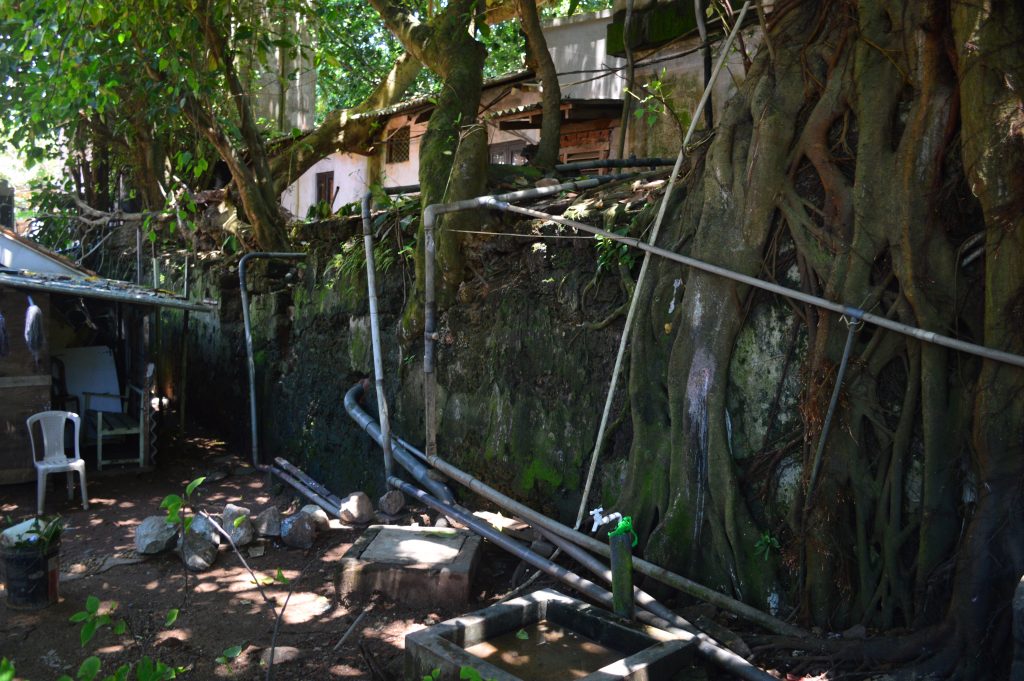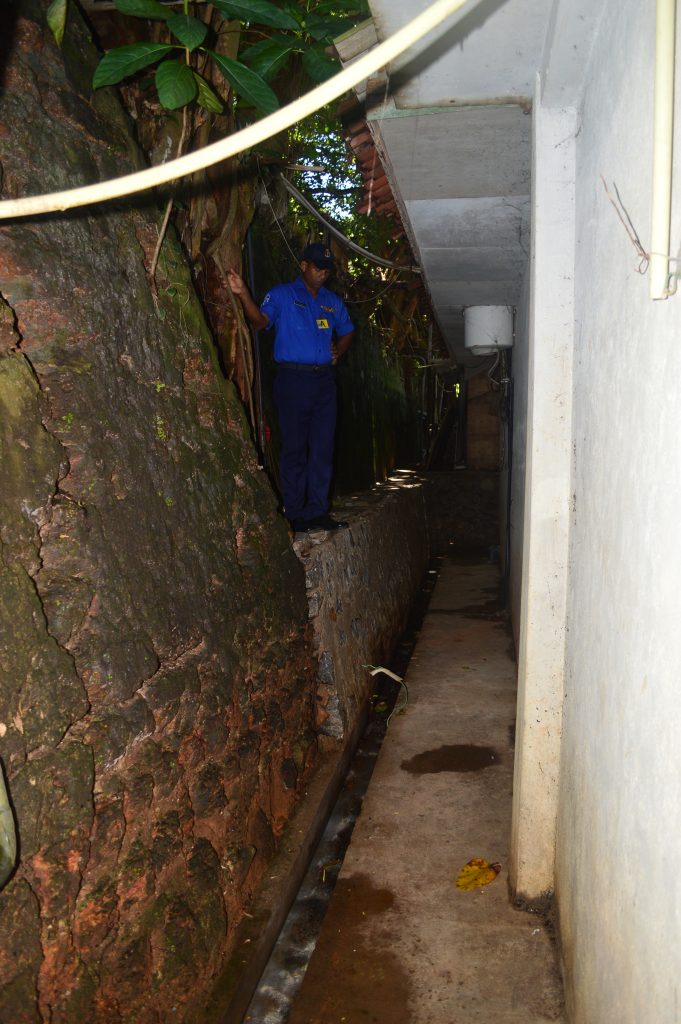Further researches are needed to delineate the Ancient Maritime Tin Route mediated by ancient seafaring merchants and artisans of Sarasvati Civilization. There are intimations of contacts between Ancient India and Ancient Far East from ca. 4th millennium BCE with the discovery of bronze-age sites in Ancient Far East (pace Bon Chang and DongSon/Karen Bronze Drums). Remarkable evidence is provided by signifiers of Indus Script hieroglyphs on Ancient Far East artifacts.
After Map 1: Map showing Khao Sam Kaeo on the east coast and the complex of Phu Khao Thong/Bang Kluai Nok on the west coast [Drawing by the Thai-French archaeological mission].in: "The development of coastal polities in the Upper Thai-Malay Peninsula" by Berenice Bellina et al (2014) in: Before Siam: Essays in Art and Archaeology. (pp. 69-89). River Books http://discovery.ucl.ac.uk/1456831/ Mirror:
Apart from etched beads which echo Sarasvati Civilization lapidary work, there are 1) ornaments found in Khao Sam Kaeo which signify Indus Script hieroglyphs and 2) potsherd with Indus Script epigraph found in Phu Khao Thong. Indus Script hieroglyphs on the Khao Sam Kaeo ornaments are:
Source:
Dr. Berenice Bellina of the Centre National de la Recherche Scientifique, France, excavations conducted by the Thai Fine Arts at Phu Khao Thong in Thailand in 2007.![]()
An anthropomorph reported by Curator Naman Ahuja.
Image from from The Art NewspaperThe remarkable artifact 30 cm tall, 2 kg., is said to have been found under the foundation of a home in Haryana. It was in display in Brussels and later in Delhi in September 2014.
Description which appeared in The Art Newspaper reads: “The figure has a cast relief on its chest of a unicorn-like animal, similar to motifs found on seals of the Harappa culture, which thrived until around 1900 BCE.” ![]() A clipped enlargement of the 'inscription' from the photograph of composite anthropomorph
A clipped enlargement of the 'inscription' from the photograph of composite anthropomorph
Hieroglyph: baraḍo = spine; backbone (Tulu) Rebus: baran, bharat ‘mixed alloys’ (5 copper, 4 zinc and 1 tin) (Punjabi)
Three Meluhha glosses denote three types of metal ingots:
1. ḍhālako ‘large ingot’. ढाळ [ ḍhāḷa ] Cast, mould, form (as of metal vessels, trinkets &c.) (Marathi)
2. mũhe 'ingot' mũhã̄ = the quantity of iron produced at one time in a native smelting furnace of the Kolhes.
3. ḍab, ḍhimba, ḍhompo ‘lump (ingot?)’, clot, make a lump or clot, coagulate, fuse, melt together (Santali)
Based on the decipherment of Indus Scipt Corpora in Meluhha language (Proto-Prakritam of Indian sprachbund), it is suggested that
1. ḍhālako ingots were signified by the ox-hide shaped ingots
2. mũhe ingots were signified by the cargo of cast metal out of a furnace
3. ḍab ingots were smaller sized, bun-shaped ingots.
The specification that the ingots were made of alloyed hard metal was signified by hieroglyphs which were shaped like a skeleton-backbone:
Rebus-metonymy layered readings of these hieroglyphs are:
Hieroglyph: karaṁḍa -- m.n. ʻ bone shaped like a bamboo ʼ, karaṁḍuya -- n. ʻ backbone ʼ (Prakrit) Rebus: करडा [karaḍā] Hard from alloy--iron, silver &c. (Marathi)
Text 4589 points to the possibility that two distinct glosses are associated with two distinct hieroglyphs ![]() . Orthographically, Sign 47 may signify a 'skeleton' while Sign 48 may signify a 'backbone' or rib cage.
. Orthographically, Sign 47 may signify a 'skeleton' while Sign 48 may signify a 'backbone' or rib cage.
Sign 48. kaśēru ‘the backbone’ (Bengali. Skt.); kaśēruka id. (Skt.) Rebus: kasērā ʻmetal workerʼ (Lahnda)(CDIAL 2988, 2989) Spine, rib-cage: A comparable glyptic representation is on a seal published by Omananda Saraswati. In Pl. 275: Omananda Saraswati 1975. Ancient Seals of Haryana (in Hindi). Rohtak.” (I. Mahadevan, 'Murukan' in the Indus Script, The Journal of the Institute of Asian Studies, March 1999). B.B. Lal, 1960. From Megalithic to the Harappa: Tracing back the graffiti on pottery. Ancient India, No.16, pp. 4-24.
Sign 47: OAw. pāṁjara ʻcage, skeleton ʼ Rebus: pasra 'smithy'.
Sign 48:
Alternative 1: kaśēru ‘the backbone’ (Bengali. Skt.); kaśēruka id. (Skt.) Rebus: kasērā ʻmetal workerʼ (Lahnda)(CDIAL 2988, 2989)
Alternative 2: Pk. karaṁḍa -- m.n. ʻ bone shaped like a bamboo ʼ, karaṁḍuya -- n. ʻ backbone ʼ (CDIAL 2670). Rebus: karaḍa 'hard alloy'
Alternative 3: ḍokka bone; ciparta ḍokka rib. Go. ḍogor peṛeka backbone Rebus: Re<doGga>(F),,<DoGga>(B) {N} ``^boat, dugout ^canoe''. P. ḍõgā m.,
°gī f., ḍõghā m., °ghī f. ʻ a deep boat ʼ
khareḍo = a currycomb (Gujarati) खरारा [ kharārā ] m ( H) A currycomb. 2 Currying a horse. (Marathi) Rebus: करडा [karaḍā] Hard from alloy--iron, silver &c. (Marathi) kharādī ‘ turner’ (Gujarati)
<reRi>(B) {N} ``^backbone, ^blade of axe, ^slab''. Pl. <-le>; also <reRi siksaG> `backbone'; <reRi-saG> `id.'. @B23090. #32361. <reDi>(F) {NB} ``^spine''. @N48. #31761.
Kh<burondi>(D) {NI} ``^spine''.
Pk. karaṁḍa -- m.n. ʻ bone shaped like a bamboo ʼ, karaṁḍuya -- n. ʻ backbone ʼ. *kaṇṭa3 ʻ backbone, podex, penis ʼ. 2. *kaṇḍa -- . 3. *karaṇḍa -- 4. (Cf. *kāṭa -- 2, *ḍākka -- 2: poss. same as káṇṭa -- 1] 1. Pa. piṭṭhi -- kaṇṭaka -- m. ʻ bone of the spine ʼ; Gy. eur. kanro m. ʻ penis ʼ (or < káṇṭaka -- ); Tir. mar -- kaṇḍḗ ʻ back (of the body) ʼ; S. kaṇḍo m. ʻ back ʼ, L. kaṇḍ f., kaṇḍā m. ʻ backbone ʼ, awāṇ. kaṇḍ, °ḍī ʻ back ʼ; P. kaṇḍ f. ʻ back, pubes ʼ; WPah. bhal. kaṇṭ f. ʻ syphilis ʼ; N. kaṇḍo ʻ buttock, rump, anus ʼ, kaṇḍeulo ʻ small of the back ʼ; B. kã̄ṭ ʻ clitoris ʼ; Or. kaṇṭi ʻ handle of a plough ʼ; H. kã̄ṭā m. ʻ spine ʼ, G. kã̄ṭɔ m., M. kã̄ṭā m.; Si. äṭa -- kaṭuva ʻ bone ʼ, piṭa -- k° ʻ backbone ʼ. 2. Pk. kaṁḍa -- m. ʻ backbone ʼ.(CDIAL 2670) مرکنډئِي mar-kanḏḏaʿī, s.f. (6th) The throat, the windpipe, the gullet. 2. The end of the backbone where the neck joins. Sing. and Pl.(Pushto)
![]()
![]() This glyph could be a variant of the glyph (Sign 47) which occurs in the most frequent text sequence in inscriptions of Indus script corpora.
This glyph could be a variant of the glyph (Sign 47) which occurs in the most frequent text sequence in inscriptions of Indus script corpora.![]() Sign 47 may signify kaśēru rebus: metal worker. Sign 48 may signify भरत bharata n A factitious metal compounded of copper, pewter, tin &c
Sign 47 may signify kaśēru rebus: metal worker. Sign 48 may signify भरत bharata n A factitious metal compounded of copper, pewter, tin &cbaraḍo = spine; backbone (Tulu) Rebus: baran, bharat ‘mixed alloys’ (5 copper, 4 zinc and 1 tin) (Punjabi).
भरत (p. 603) [ bharata ] n A factitious metal compounded of copper, pewter, tin &c.भरताचें भांडें (p. 603) [ bharatācē mbhāṇḍēṃ ] n A vessel made of the metal भरत. 2 See भरिताचें भांडें.भरती (p. 603) [ bharatī ] a Composed of the metal भरत. (Molesworth Marathi Dictionary).This gloss, bharata is denoted by the hieroglyphs: backbone, ox. bharatiyo = a caster of metals; a brazier; bharatar, bharatal, bharataḷ = moulded; an article made in a mould; bharata = casting metals in moulds; bharavum = to fill in; to put in; to pour into (Gujarati) bhart = a mixed metal of copper and lead;bhartīyā = a brazier, worker in metal; bhaṭ, bhrāṣṭra = oven, furnace (Sanskrit.)
balad m. ʻox ʼ, gng. bald, (Ku.) barad, id. (Nepali. Tarai) Rebus: bharat (5 copper, 4 zinc and 1 tin (Punjabi)
Seal published by Omananda Saraswati. In Pl. 275: Omananda Saraswati 1975. Ancient Seals of Haryana (in Hindi). Rohtak.
![]() This pictorial motif gets normalized in Indus writing system as a hieroglyph sign: baraḍo = spine; backbone (Tulu) Rebus: baran, bharat‘mixed alloys’ (5 copper, 4 zinc and 1 tin) (Punjabi) Tir. mar -- kaṇḍḗ ʻ back (of the body) ʼ; S. kaṇḍo m. ʻ back ʼ, L. kaṇḍ f., kaṇḍā m. ʻ backbone ʼ, awāṇ. kaṇḍ, °ḍī ʻ back ʼH. kã̄ṭā m. ʻ spine ʼ, G. kã̄ṭɔ m., M. kã̄ṭā m.; Pk. kaṁḍa -- m. ʻ backbone ʼ.(CDIAL 2670) Rebus: kaṇḍ ‘fire-altar’ (Santali) The hieroglyph ligature to convey the semantics of ‘bone’ and rebus reading is: ‘four short numeral strokes ligature’ |||| Numeral 4: gaṇḍa'four' Rebus: kaṇḍa'furnace, fire-altar' (Santali)
This pictorial motif gets normalized in Indus writing system as a hieroglyph sign: baraḍo = spine; backbone (Tulu) Rebus: baran, bharat‘mixed alloys’ (5 copper, 4 zinc and 1 tin) (Punjabi) Tir. mar -- kaṇḍḗ ʻ back (of the body) ʼ; S. kaṇḍo m. ʻ back ʼ, L. kaṇḍ f., kaṇḍā m. ʻ backbone ʼ, awāṇ. kaṇḍ, °ḍī ʻ back ʼH. kã̄ṭā m. ʻ spine ʼ, G. kã̄ṭɔ m., M. kã̄ṭā m.; Pk. kaṁḍa -- m. ʻ backbone ʼ.(CDIAL 2670) Rebus: kaṇḍ ‘fire-altar’ (Santali) The hieroglyph ligature to convey the semantics of ‘bone’ and rebus reading is: ‘four short numeral strokes ligature’ |||| Numeral 4: gaṇḍa'four' Rebus: kaṇḍa'furnace, fire-altar' (Santali)kaśēru ‘the backbone’ (Bengali. Skt.); kaśēruka id. (Skt.) Rebus: kasērāʻ metal worker ʼ (Lahnda)(CDIAL 2988, 2989)Vikalpa: riṛ ‘ridge formed by the backbone’ (Santali); rebus: rīti ‘brass’ (Skt.) Vikalpa: bharaḍo ‘spine’; Rebus: bharan ‘to spread or bring out from a kiln’ (P.) baran, bharat (5 copper, 4 zinc and 1 tin)(P.B.) baraḍo = spine; backbone; the back; baraḍo thābaḍavo = lit. to strike on the backbone or back; hence, to encourage; baraḍo bhāre thato = lit. to have a painful backbone, i.e. to do something which will call for a severe beating (G.lex.)
baraḍo = spine; backbone (Tulu) Rebus: baran, bharat ‘mixed alloys’ (5 copper, 4 zinc and 1 tin) (Punjabi).
goṭi, ‘silver, laterite’ are denoted by goṭa, ‘seed’ hieroglyph.
A pair of 'lozenges infixed with spots or notches' together with a skeleton-backbone hieroglyph:
Text 5265 S. ḍ̠aḇo m. ʻ a kind of dot ʼ; P. ḍabb m. ʻ spot ʼ Rebus: ḍab 'small bun-shaped ingot'; dula 'pair' Rebus: dul 'cast metal' Thus, the pair signifies dul ḍ̠aḇ 'cast ingot'
In the following examle, the orthography displays a 'spot' within the lozenge-shaped pair, reinforcing the semantics: dul ḍ̠aḇ 'cast ingot'
.
Copper tablet (H2000-4498/9889-01) with raised script found in Trench 43. Harappa. (Source: Slide 351. harappa.com) Eight such tablets have been found (HARP, 2005); these were recovered from circular platforms. This example of a uniquely scripted tablet with raised Indus script glyphs shows that copper tablets were also used in Harappa, while hundreds of copper tablets with indus script inscriptions were found in Mohenjo-daro. See also:http://bharatkalyan97.blogspot.com/2011/11/decoding-longest-inscription-of-indus.html The copper tablet with raised script contains a 'backbone' glyph; decoding: kaśēru ‘the backbone’ (Bengali. Skt.); kaśēruka id. (Skt.) Rebus: kasērāʻ metal worker ʼ (Lahnda)(CDIAL 2988, 2989)mũhã̄ = the quantity of iron produced at one time in a native smelting furnace of the Kolhes; iron produced by the Kolhes and formed like a four-cornered piece a little pointed at each end (Santali). ![]()
Glyph (Middle glyph of the three-glyph inscription): Sign 48: kaśēru ‘the backbone’ (Bengali. Skt.); kaśēruka id. (Skt.) Rebus: kasērāʻ metal worker ʼ (Lahnda)(CDIAL 2988, 2989) L. awāṇ. kasērā ʻ metal worker ʼ, P. kaserā m. ʻ worker in pewter ʼ (both ← E with -- s -- ); N. kasero ʻ maker of brass pots ʼ; Bi. H. kaserā m. ʻ worker in pewter ʼ. (CDIAL 2988) கசம்¹ kacam , n. cf. ayas. (அக. நி.) 1. Iron; இரும்பு. 2. Mineral fossil; தாதுப்பொருள் (Tamil) N. kasār ʻ maker of brass pots ʼ; A. kãhār ʻ worker in bell -- metal ʼ; B. kã̄sāri ʻ pewterer, brazier, coppersmith ʼ, Or. kãsārī; H. kasārī m. ʻ maker of brass pots ʼ; G.kãsārɔ, kas m. ʻ coppersmith ʼ; M. kã̄sār, kās m. ʻ worker in white metal ʼ, kāsārḍā m. ʻ contemptuous term for the same ʼ. (CDIAL 2989)
Other two glyphs of the copper tablets: 'rim-of-jar' + 'oval + inlaid 'short stroke'. kaṇḍa kanka 'rim of jar' (Santali); rebus: furnace scribe (account). kaṇḍa kanka may be a dimunitive form of *kan-khār ‘copper smith’ comparable to the cognate gloss: kaṉṉār ‘coppersmiths, blacksmiths’ (Tamil) If so, kaṇḍa kan-khār connotes: ‘copper-smith furnace.’kaṇḍa ‘fire-altar (Santali); kan ‘copper’ (Ta.) Glyph 'inlaid short stroke in oval' may connote an ingot. ḍhālako = a large metal ingot (G.) ḍhālakī = a metal heated and poured into a mould; a solid piece of metal; an ingot (G.)
Thus the inscription of the copper tablet with inscription in raised script (bas relief) is decoded as: furnace account (scribe), maker of brass pots, (bronze) ingots: ḍhālako kasērā kaṇḍa kanka lit. ingot, brass worker, furnace account (scribe). A third glyph on these tablets is an oval (variant 'rhombus') sign -- like a metal ingot -- and is ligatured with an infixed sloping stroke: ḍhāḷiyum = adj. sloping, inclining (G.) The ligatured glyph is read rebus as: ḍhālako = a large metal ingot (G.) ḍhālakī = a metal heated and poured into a mould; a solid piece of metal; an ingot (G.)
dula 'pair' (Kashmiri); rebus: dul 'cast (metal)'(Santali)
A pair of ḍhālako shown on the seal impression on a pot (Mohenjodaro. Text 2937) may connote dul ḍhālako ‘cast metal ingot’.
Harappa. Prism tablet. H94-2177/4999-01: Molded faience tablet, Period 3B/3C. Rebus reading:
Two 'ingot' hieroglyphs: dul ḍ̠aḇ 'cast ingot'
'Backbone' hieroglyph:karaṁḍa ʻbackboneʼ Rebus: karaḍa 'hard alloy'
'crocodile' hieroglyph: kāru 'crocodile' (Telugu) Rebus: kāruvu 'artisan' (Telugu) khār 'blacksmith' (Kashmiri)
'two' hieroglyph + 'rimless pot' hieroglyph: dula 'two' Rebus: dul 'cast metal' + baTa 'rimless pot' Rebus: baTa 'furnace'. Thus metal-casting furnace.
The text of the inscription on this prism tablet of Harappa includes the most frequently occurring three-sign sequence in the entire Indus Script Corpora is shown on a Harappa tablet reproduced below:
Rebus reading of the most frequently occurring three-sign sequence in the entire Indus Script Corpora: karaṁḍa ʻbackboneʼ Rebus: karaḍa 'hard alloy' PLUS
kanka, karṇaka ‘rim of jar’ Rebus: karṇaka ‘accountscribe’.
kārṇī m. ʻsuper cargo of a ship ʼ(Marathi) PLUS
khareḍo = a currycomb (Gujarati) खरारा [ kharārā ] m ( H) A currycomb. 2 Currying a horse. (Marathi) Rebus: 1. करडा [karaḍā] Hard from alloy--iron, silver &c. (Marathi) 2. kharādī ‘ turner’ (Gujarati)
This reading assumes that the 'currycomb' hieroglyph is an allograph for 'backbone' hieroglyph. An alternative reading is: G. kã̄gsī f. ʻcombʼRebus: kamsa 'bronze, bell-metal'.
Other alternative readings:
kaṅkaṭa -- 2 ʻ comb ʼ Rebus: Pk. kakkhaḍa -- , °khala -- ʻ rough ʼ; Ash. kakeṛäˊ ʻ hard Allographs: TS.Pa. kakkaṭa -- m. ʻ a large deer kaṅkāla1 m.n. ʻ skeleton ʼ kakkara. [Tel.] n. The demoiselle crane Anthropoides rirgo, kaṅká m. ʻ heron ʼ Kol. (Kin.) kakkare partridge 1083 Ta. kaṅkaṇam a waterfowl. Te. kaṅkaṇamu a large bustard with a red head.
1076 Ma. kakkaṭa dagger. Ka. kakkaḍe, karkaḍe a kind of weapon. / Cf. Skt. (lex.) karkaśa- sword. Alternative: Rebus: kaṅgu -- f. ʻ Panicum italicum ʼ
kaṁsá1 m. ʻ metal cup ʼ AV., m.n. ʻ bell -- metal ʼ Pat. as in S., but would in Pa. Pk. and most NIA. lggs. collide with kāˊṁsya -- to which L. P. testify and under which the remaining forms for the metal are listed. 2. *kaṁsikā -- . 1. Pa. kaṁsa -- m. ʻ bronze dish ʼ; S. kañjho m. ʻ bellmetal ʼ; A. kã̄h ʻ gong ʼ; Or. kãsā ʻ big pot of bell -- metal ʼ; OMarw. kāso (= kã̄ -- ?) m. ʻ bell -- metal tray for food, food ʼ; G. kã̄sā m. pl. ʻ cymbals ʼ; -- perh. Woṭ. kasṓṭ m. ʻ metal pot ʼ Buddruss Woṭ 109. 2. Pk. kaṁsiā -- f. ʻ a kind of musical instrument ʼ; K. k&ebrevdotdot;nzü f. ʻ clay or copper pot ʼ; A. kã̄hi ʻ bell -- metal dish ʼ; G. kã̄śī f. ʻ bell -- metal cymbal ʼ, kã̄śiyɔ m. ʻ open bellmetal pan ʼ. A. kã̄h also ʻ gong ʼ or < kāˊṁsya -- .(CDIAL 2576)
d.ha_l = a shield, a buckler; the grand flag of an army directing its march and encampments; the standard or banner of a chieftain; a flag flying on a fort (G.); rebus: d.ha_l.ako = large metal ingot
A Kalibangan potsherd contains the 'backbone' hieroglyph. This potsherd was used by BB Lal to indicate that the direction of writing of 'signs' was generally from right to left sequence:
Rebus reading of incised Kalibangan potsherd: ayo 'fish' Rebus: aya 'iron, metal' PLUS karaṁḍa ʻbackboneʼ Rebus: karaḍa 'hard alloy' PLUS kanka, karṇaka ‘rim of jar’ Rebus: karṇaka ‘accountscribe’.
kārṇī m. ʻsuper cargo of a ship ʼ(Marathi)
Incised potsherd from Kalibangan. The overriding of the signs shows that the direction of writing was from right to left.
B. B. Lal The Indus Script: Some Observations Based on Archaeology, The Journal of the Royal Asiatic Society of Great Britain and Ireland, No. 2 (1975), pp. 173-177 Published by: Cambridge University Press. URL: http://www.jstor.org/stable/25203657 The article provides archaeologically provenanced inscribed samples of writing and clay tablets with a seal impressions. ![]()
![]()
The gold pendant is made from a hollow cylinder with soldered ends and perforated point. Museum No. MM 1374.50.271; Marshall 1931: 521, pl. CLI, B3. [After Fig. 4.17a, b in: JM Kenoyer, 1998, p. 196]. A fish sign, preceded by seven short numeral strokes, also appears on a gold Golden pendant with inscription from jewelry hoard at Mohenjo-daro. Drawing of inscription that encircles the gold ornament. Needle-like pendant with cylindrical body. Two other examples, one with a different series of incised signs were found together. The pendant is made from a hollow cylinder with soldered ends and perforated point. Museum No. MM 1374.50.271; Marshall 1931: 521, pl. CLI, B3. [After Fig. 4.17a, b in: JM Kenoyer, 1998, p. 196].
Decoding (rebus mleccha) of inscription on pendant
kana, kanac = corner (Santali); kañcu = bronze (Te.) sal ‘splinter’; sal ‘workshop’ (Santali)
dāṭu ‘cross’ (Te.); dhātu = mineral (Skt.)
Four + three strokes are read (since the strokes are shown on two lines one below the other) : gaṇḍa ‘four’ (Santali); rebus: ‘furnace, kaṇḍ fire-altar’; kolmo ‘three’ (Mu.); rebus: kolami ‘smithy’ (Te.) Vikalpa: ?ea ‘seven’ (Santali); rebus: ?eh-ku ‘steel’ (Te.)
ayo ‘fish’ (Mu.); rebus: aya ‘metal’ (G.)
Thus, the inscription is: kancu sal (bronze workshop), dhatu aya kaṇḍ kolami mineral, metal, furnace/fire-altar smithy.
The inscription is a professional calling card -- describing professional competence and ownership of specified items of property -- of the wearer of the pendant.
Examples of miniature tablets which are an expansion of the token shapes of ancient Near East may be seen with Indus writing on the following clusters of images. The writing deploys hieroglyphs. On one stream of evolution, the wedge-shape becomes a glyphic component of cuneiform writing; on another stream of evolution, the token-shapes get deployed with Indus writing. That this deployment is closely related to the bronze-age revolution of tin- and zinc-bronzes and other metal alloys has been demonstrated by the cipher using rebus readings of hieroglyphs with the underlying sounds of lexemes evidenced from lexemes of Indian sprachbund:




 Anil Mani
Anil Mani 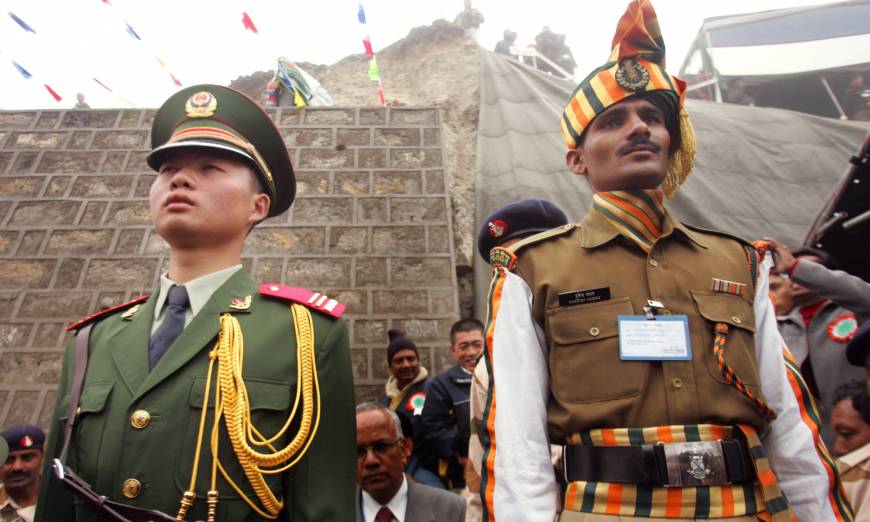











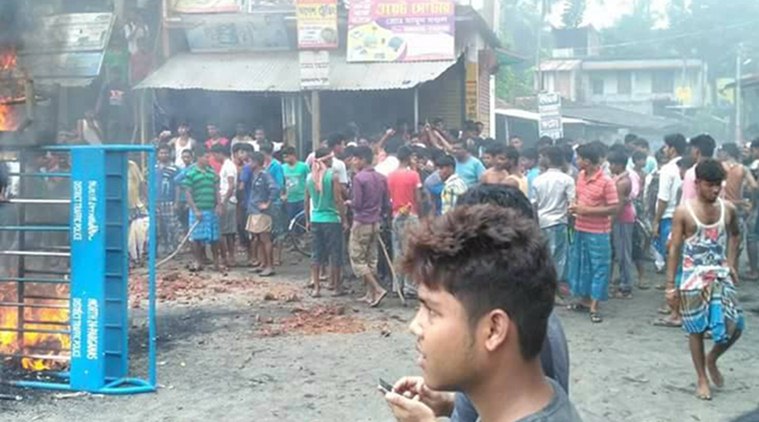











 Basirhat fast becoming a reflection of a genie let out of the bottle
Basirhat fast becoming a reflection of a genie let out of the bottle
